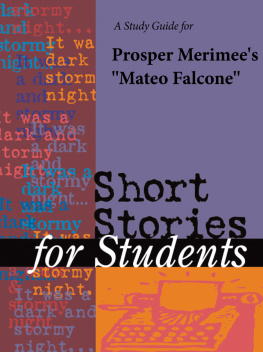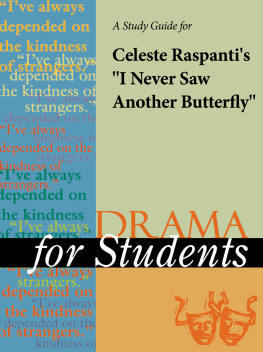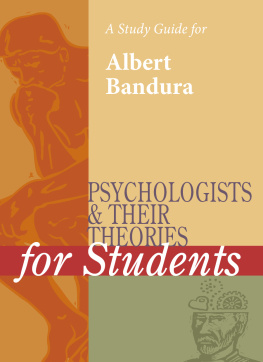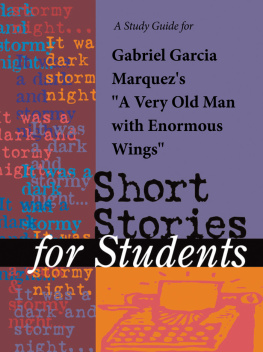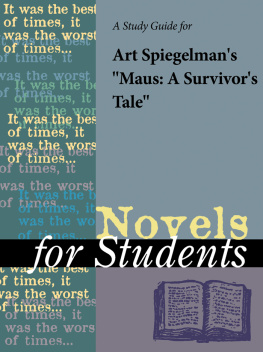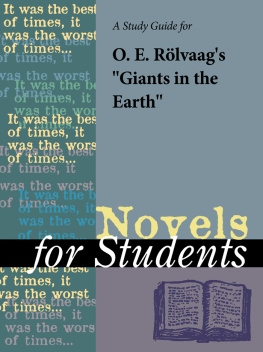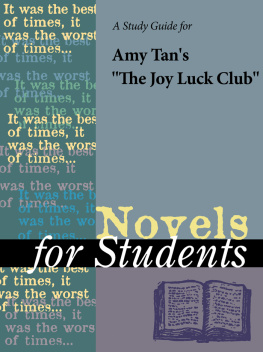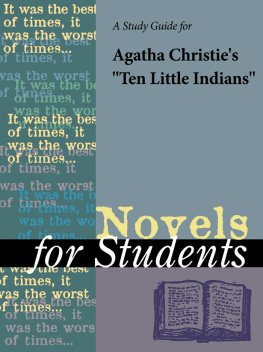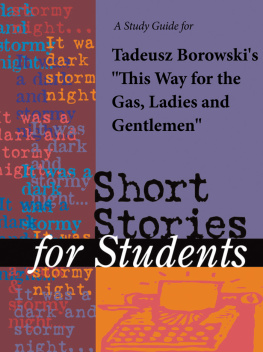TABLE OF CONTENTS
Guide
Short Stories for Students, Volume 8
Staff
Editorial: Ira Mark Milne, Editor. Tim Akers, Dave Galens, Polly Vedder, Kathleen Wilson, Contributing Editors. James P. Draper, Managing Editor.
Research: Victoria B. Cariappa, Research Team Manager. Cheryl Wamock, Research Specialist. Patricia T. Ballard, Conine A. Boland, Wendy Festerling, Tamara Nott, Tracie A. Richardson, Research Associates. Timothy Lehnerer, Patricia Love, Research Assistants.
Permissions: Maria Franklin, Permissions Manager. Kimberly Smilay, Permissions Specialist. Kelly Quin, Permissions Associate. Sandra K. Gore, Erin Bealmear, Permissions Assistants.
Production: Mary Beth Trimper, Production Director. Evi Seoud, Assistant Production Manager. Cindy Range, Production Assistant.
Imaging and Multimedia Content Team: Randy Bassett, Image Database Supervisor. Robert Duncan, Michael Logusz, Imaging Specialists. Pamela A. Reed, Imaging Coordinator.
Product Design Team: Cynthia Baldwin, Product Design Manager. Pamela A. E. Galbreath, Senior Art Director. Gary Leach, Graphic Artist.
Copyright Notice
Since this page cannot legibly accommodate all copyright notices, the acknowledgments constitute an extension of the copyright notice.
While every effort has been made to secure permission to reprint material and to ensure the reliability of the information presented in this publication, Gale Research neither guarantees the accuracy of the data contained herein nor assumes any responsibility for errors, omissions, or discrepancies. Gale accepts no payment for listing; and inclusion in the publication of any organization, agency, institution, publication, service, or individual does not imply endorsement of the editors or publisher. Errors brought to the attention of the publisher and verified to the satisfaction of the publisher will be corrected in future editions.
This publication is a creative work fully protected by all applicable copyright laws, as well as by misappropriation, trade secret, unfair competition, and other applicable laws. The authors and editors of this work have added value to the underlying factual material herein through one or more of the following: unique and original selection, coordination, expression, arrangement, and classification of information. All rights to this publication will be vigorously defended.
Copyright 2000
The Gale Group
27500 Drake Road
Farmington Hills, MI 48331-3535
All rights reserved including the right of reproduction in whole or in part in any form.
This book is printed on acid-free paper that meets the minimum requirements of American National Standard for Information SciencesPermanence Paper for Printed Library Materials, ANSI Z39.48-1984.
ISBN 0-7876-3608-8
ISSN 1092-7735
Printed in the United States of America
10 9 8 7
Mateo Falcone
Prosper Merimee
1829
Introduction
Prosper Merimees Mateo Falcone (1829), originally subtitled Les moeurs de Corse (The Ways of Corsica), chronicles the killing of a ten-year-old boy by his father. The story, Merimees first, is provocative in spite of the detached narrative voice of his unnamed narrator. This laconic, disconnected voice heightens the shock value of the event and at the same time demands the reader to interpret the story objectively. Such contemporaries as Stendhal (Henri Beyle), Henry James, and Walter Pater admired Merimee and praised him for his craft. Pater called Mateo Falcone the cruellest story in the world.
Mateo Falcone is a brief, but complex story. It features at least five points of view and at least four ways of life (the moeurs of the original subtitle). Merimees themes include betrayal and honor, savagery and civilization, vendetta and law, and custom and morality. Most importantly, Mateo Falcone exemplifies the art of storytelling at its most concentrated and allusive. Most critics consider the story disturbing and unforgettable.
Author Biography
Prosper Merimee was born in Paris in 1803 to a moderately successful painter, Leonor Merimee, and his wife, Anne. Merimees mother was a painter as well as the granddaughter of Madame Leprince de Beaumont, who had written and published a version of the popular childrens story Beauty and the Beast.
Merimee began attending the Lycee Napoleon at the age of eight. He showed promise in Latin and a few other subjects, but was generally considered an average student. He developed a strong interest in art and archeology, however, and from an early age became infatuated with members of the opposite sex. Although Merimee did not become a painter, he valued the skills of drawing and sketching and made much use of them in later life. He taught himself Serbian, Russian, and Greek, and he had learned English at home from his parents.
After graduation from the Lycee, Merimee entered law school; after receiving his degree, he embarked on a lifelong career as a civil servant. Most significantly, he became Minister of Historical Monuments in 1834. With his position he is credited with salvaging much of the French Gothic architectural legacy. He had a strong sense of history, and he strove not only to preserve important sites and buildings but to instill a popular appreciation of them.
Merimee began writing as a young man. He knew Stendhal and other writers of the day and received valuable advice from them. His earliest published works were two hoaxes: a collection of supposedly Spanish plays and a volume of Illyrian (Albanian) ballads. Merimee also wrote travel books and journalism, and he translated the Russian poet Pushkin into French for the first time. While not prolific as a fiction writer, Merimee produced a respectable body of work. In 1870, the year that Merimee died, composer Georges Bizet adapted a Merimee story with a Spanish setting as an opera. Probably because of the enormous success of that opera, Carmen (1845) is Merimees bestknown work.
Plot Summary
Mateo Falcone is set in Corsica in the seventeenth century in the region of Porto-Vecchio, which is midway between the town of Corte and the maquis, the wild country of the Corsican highlands where outlaws and misfits find refuge from law and authority. Mateo Falcone, a forty-eight-year-old father of three married daughters and one ten-year-old son, is a successful sheep rancher. He sets off to gather his flock one afternoon. His wife, Guiseppa, accompanies him, and they leave their son, Fortunato alone.
Fortunato daydreams in the autumn sun. He anticipates going into town in a few days to have dinner with his uncle, a local notable, or corporal. Suddenly, gunshots echo from nearby. On nearby path, a wounded man appears. He has been shot in his thigh. Seeing Fortunato, he asks whether the boy is the son of Mateo Falcone. He introduces himself as Gianetto Sanpiero, the implication being that he has a tie to Falcone and thus a right to expect asylum. Fortunato at first declines to hide Gianetto, but when the bandit offers a piece of silver, the boy conceals him beneath the hay.

